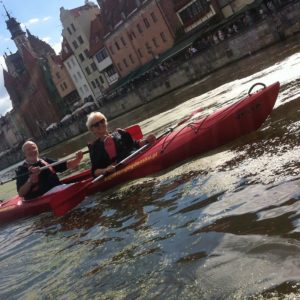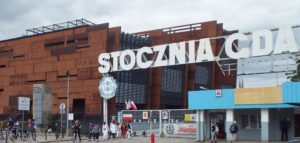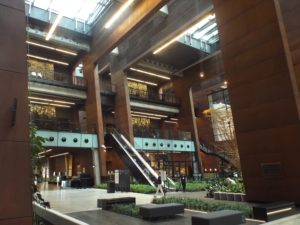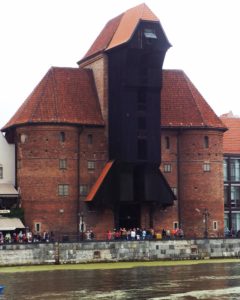Urban Kayaking
- By admin
- October 26, 2016
- No Comments
 Being the home of Solidarity (Solidarność) the only images I had seen of Gdansk were of the docks and shipyards. The reality is so much more. Gdansk has everything; a long Baltic coastline with miles of empty, sandy beaches with lovely bars and cafes serving delicious food and a beautiful city with impressive buildings from all ages. We wandered around the city admiring the amazing post war and post Soviet re-construction. The architecture has a strong Dutch influence and in many ways, resembles Amsterdam with its tall, narrow, gabled buildings. The riverside displays little evidence of the three hundred plus grain stores that previously lined the banks of the river, once providing the main source of wealth for Gdansk. Even now, when travelling through Poland we passed mile after mile of corn fields, looking something akin to the prairies of the mid-west in the States.
Being the home of Solidarity (Solidarność) the only images I had seen of Gdansk were of the docks and shipyards. The reality is so much more. Gdansk has everything; a long Baltic coastline with miles of empty, sandy beaches with lovely bars and cafes serving delicious food and a beautiful city with impressive buildings from all ages. We wandered around the city admiring the amazing post war and post Soviet re-construction. The architecture has a strong Dutch influence and in many ways, resembles Amsterdam with its tall, narrow, gabled buildings. The riverside displays little evidence of the three hundred plus grain stores that previously lined the banks of the river, once providing the main source of wealth for Gdansk. Even now, when travelling through Poland we passed mile after mile of corn fields, looking something akin to the prairies of the mid-west in the States.
We walked to the Solidarity museum on the edge of town. The museum was opened in 2014 on the 20th anniversary of the 1980 shipyard strikes and traces the history of the Solidarity movement and Poland’s struggle to free itself of communist rule. It is a stunning piece of modern architecture symbolising the ships that were once built in the docks. The original gates through which the shipyards workers used to enter have been preserved and in front of the museum stands a huge memorial to the striking shipyard workers who were shot in 1970. The modern interior of museum continued the industrial glass and steel theme of the exterior. Several floors housed books and documents relevant to the period and now used for study and research. There was also a rather posh, empty restaurant with no mention of beer and sandwiches on the menu. The retired co-founder of Solidarity (and former President of Poland), Lech Walesa, still has an office in the building
Iza had suggested an hour or two of ‘Urban Kayaking’ as an alternative way of seeing the city. Meeting up at the museum we drove back to the riverside and hiring double kayaks we set out along the river. With the tall buildings towering over the river’s edge the size and scale of architecture was quite awsome, especially the Gdansk Crane; Europe’s largest medieval river crane. It was in use for 500 years and able to lift huge weights powered by men, hamster like, walking within a very large treadmill. Away from the crowds of the city centre this watery way of sightseeing was a peaceful, interesting experience.




Leave a Reply